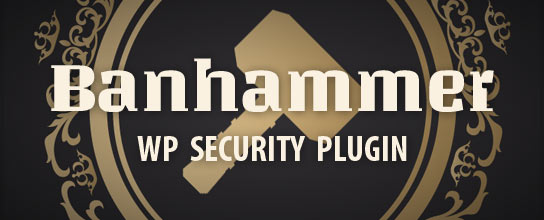
How to Add Your Plugin to the WordPress Plugin Directory
Getting your plugins listed in the official WordPress Plugin Directory is considered a chore by many, but it’s nothing that should stop you from sharing your plugin with the community at large. Up until now, I haven’t really bothered with adding my plugin collection to the Directory, but after Herb Goodman helped to package my recent Block Bad Queries plugin, I figured now was a good time to dig in and learn the ropes. It turns out the process only took about an hour to complete, not including the waiting period for access to the Subversion Repository (which was about 18 hours). Definitely worth the potential exposure provided by having your plugin listed in the official directory.
PubSubHubbub Now On All WordPress.com sites (+ plugin for self hosted sites)
This is me trying to understand it:
Instead of services that read your feeds (e.g. Google Reader) having to ASK for your feed periodically, now they can instead just wait until YOUR SITE notifies THEM. Basically a “push” service.
It seems to me this is half the equation. The other half is building services that accept these push notifications. I’m not sure who is already doing that, but I wouldn’t be surprised if Google is on it, since it seems like a more efficient way of doing things on both sides (less server resources on both sides).
Two concerns I can think of:
- Is this just as reliable as the “old” way? People not getting feed updates because of a hiccup in the chain sucks for everyone.
- This makes “accidentally” hitting that publish button potentially even more embarrassing than it already can be. Like when you accidentally publish a post instead of a page.
Also check the overview slideshow here.
Add Link to Favorites Dropdown
This is basically a smarter way to handle the situation I just posted about. Using a function to manipulate the favorites dropdown instead of a core hack.
Editor’s note: 404 link removed.
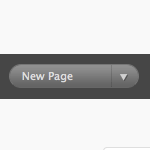
Change Quick Action Button in Admin
You know the “quick action” button in the WordPress admin? It’s a darn useful little UI touch. At the Dashboard, the default is “New Post”. But depending on where you are in the Admin, the default of it changes. In general it’s really helpful. For example when you are in the Plugins area, the default is Install Plugins:
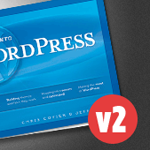
Digging Into WordPress v2.0 + Print is Back! (Oh, and a fresh new design!)
Version 2.0 is here! If you have already purchased the book, you have already gotten an email with a link to download the 2.0 version of the book. If you have been waiting for the print version to come back in stock, the time is now!
We sold out of the print version the first round in a matter of weeks. Right about that time, WordPress 2.9 was coming out, so instead of just reprinting more we decided to update the book and print new copies with that fresh information. That is exactly what we have done. The all-new Chapter 11 of the book deals with new stuff in WordPress 2.9 (and how to use the new features). That chapter will also be the home for future version-specific updates to WordPress.
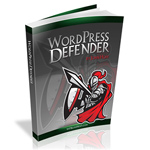
WordPress Defender: 30 Ways to Secure Your Website
Looking for a good book on WordPress security? If so, we’ve got great news! John Hoff’s new security e-book WordPress Defender provides 30 practical ways to secure your website from the evil forces of spam, bad bots, and malicious hackers. The book is packed with practical, common-sense security techniques that virtually any WordPress user can use to protect their site from malicious threats.
Use BuddyPress, Keep your Theme
If you want to use BuddyPress (a massive plugin that basically adds a social networking layer to WordPress sites, think, forums, profiles, user blogs, etc) but you’ve been hesitant to try it, now is a better time than ever.
BuddyPress 1.2 now works with stand-alone WordPress installs (before you had to use MU) and you can even keep your existing theme.
Rockin’ out WordPress custom loops
kristarella has a nice article on writing your own custom loops.
Using HTML5 elements in WordPress post content
Nicolas Gallagher:
Here are two ways to include HTML5 elements in your WordPress post content without WordPress’ wpautop function wrapping them in p tags or littering your code with line breaks…. Both ways rely on hand-coding the HTML5 markup in the WordPress editor’s HTML view.
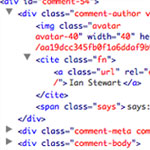
Custom Comments HTML Output
With WordPress, displaying all the comments on a Post or Page is incredibly easy. In your theme’s single.php file you probably have a line like this:
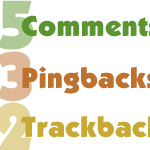
Display Separate Counts for Comments, Pingbacks and Trackbacks
In WordPress, there are three ways to respond to a post: you can leave a comment, leave a trackback, or just link to the post to create a pingback. When displaying all of the responses to your posts, it’s a good idea to separate the comments from the pingbacks and trackbacks. Uninterrupted comment threads are a pleasure to read, as are well-styled lists of pingbacks. This is an excellent way to improve the usability and stylishness of your comment areas.
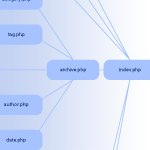
Which Template File does WordPress Use to Render Different Pages?
This page in the codex has a particularly interesting infographic that shows a flowchart of how WordPress chooses which template file it is going to use to render the page. For example, did you know if you have a published page with “contact” as the slug, it will look for and use page-contact.php automatically?
Illustrated Article on Theme Building
Great crash course article on theme building from Chris Spooner.
WooNav will be integrated in WordPress core
This is absolutely needed and will be an awesome upgrade for WordPress version 3.0. Also watch the video.



